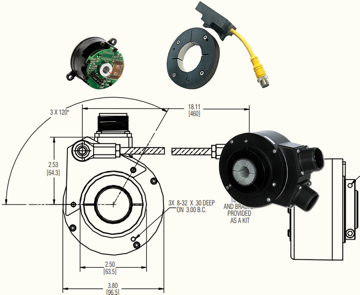When choosing the PPR value of the encoder, please keep a few simple rules in mind. Make sure that you do not choose a PPR that will cause you to exceed the maximum frequency of your controller or encoder. Try to choose a PPR that is close to the value you wish to display, this eliminates or reduces the need for a calibration constant. For example, If you wish to display 12 inches for every revolution choose a PPR of 12. If you wish to display 12.00 inches, choose 1200 PPR. However, do not make the mistake of forgetting the multiplication of the controller's input. Most controllers have X2 or X4 logic. If it is X2 logic, this would change your PPR to 600 for a 12.00 display; and the PPR would be 300 for X4 logic. These choices give you one pulse for every one unit of measurement desired. It is important to remember the frequency that your PPR will create. When choosing the PPR, do not choose one that will result in a higher frequency than the encoder can handle at your max. speed. The reverse is also true, do not choose too low of a PPR, that your controller cannot recognize the signal. Try to choose your PPR so that your calibration constant is between .5 and 1.
How do I set my Calibration Constant?
The calibration constant can be simplified by simply selecting the correct Pulses Per Revolution (PPR). Once the PPR has been selected or is known simply follow the formula presented in the Technical Manual. When choosing your calibration constant remember the closer to 1 the better. The value of the calibration constant is your best resolution per pulse of the encoder.
How Do I Choose the Pulses Per Revolution (PPR)?
Posted by London Rhodes on May 24, 2021 2:07:13 PM
Topics: How to Choose An Encoder, Installation
